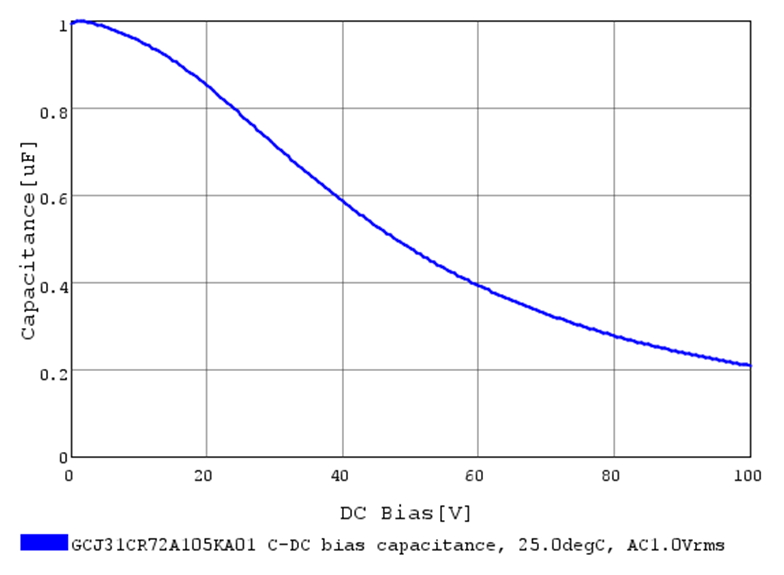TIDT328 april 2023
A.2.3.1 DC-Bias
 Figure 4-13 Effective Capacitance vs DC
Bias
Figure 4-13 Effective Capacitance vs DC
BiasFigure 4-13 illustrates that with 60-VDC output voltage the effective capacitance
of the 1-µF capacitor is just
400 nF.
TIDT328 april 2023
 Figure 4-13 Effective Capacitance vs DC
Bias
Figure 4-13 Effective Capacitance vs DC
BiasFigure 4-13 illustrates that with 60-VDC output voltage the effective capacitance
of the 1-µF capacitor is just
400 nF.